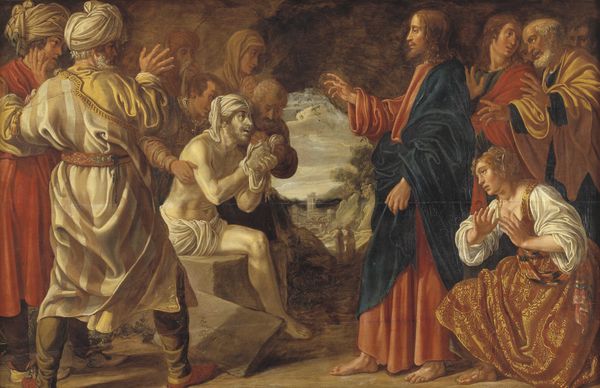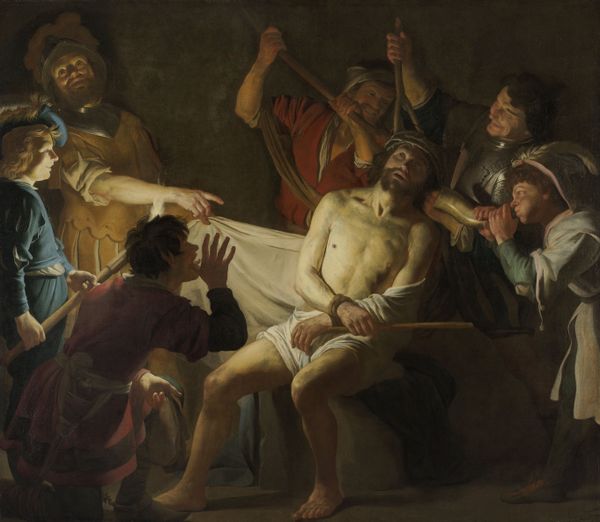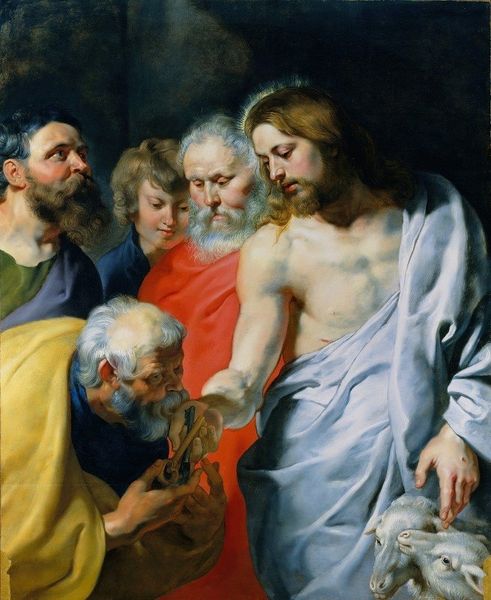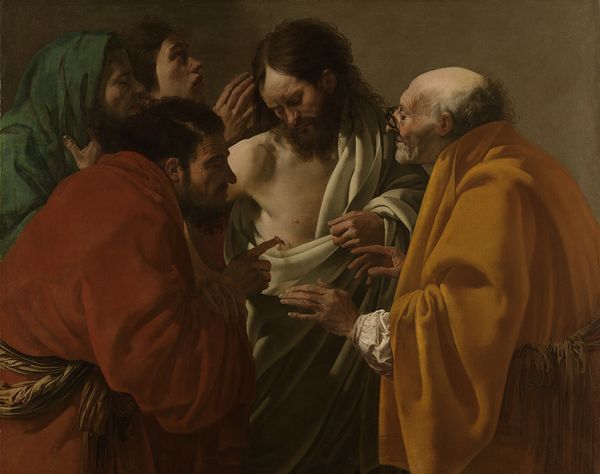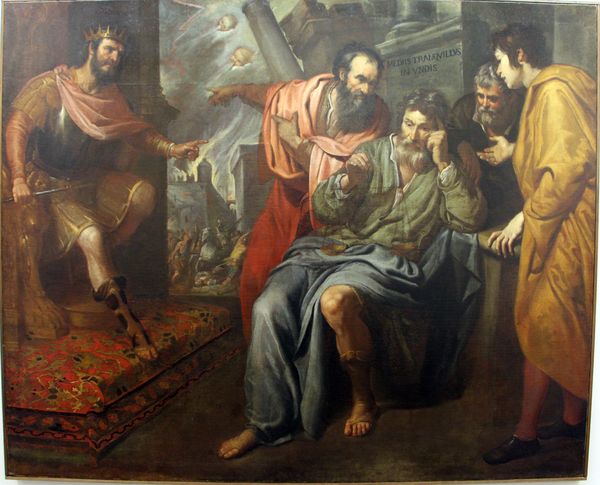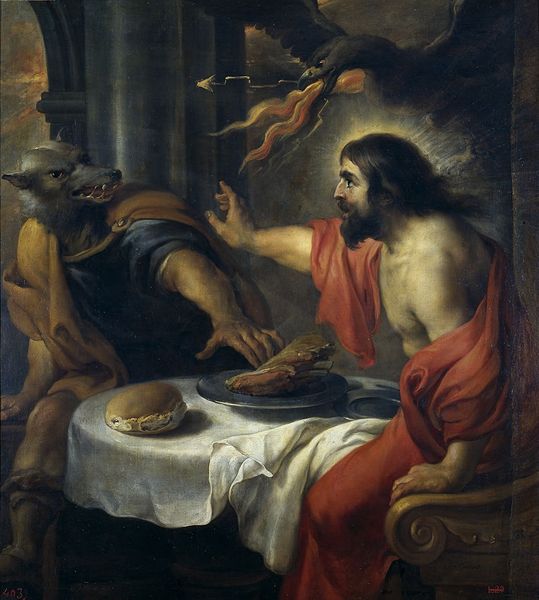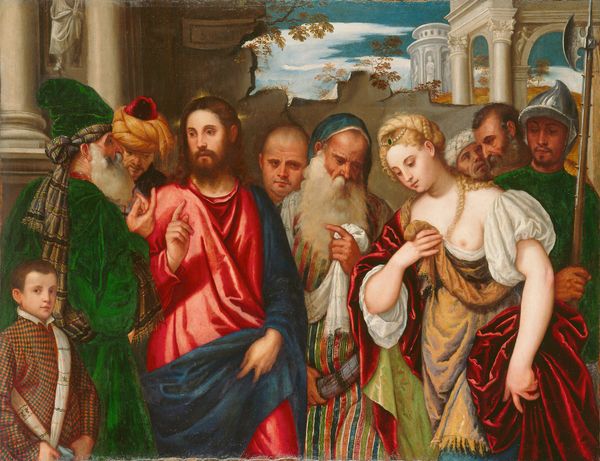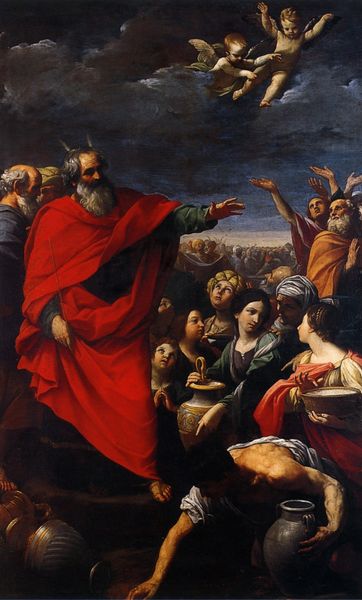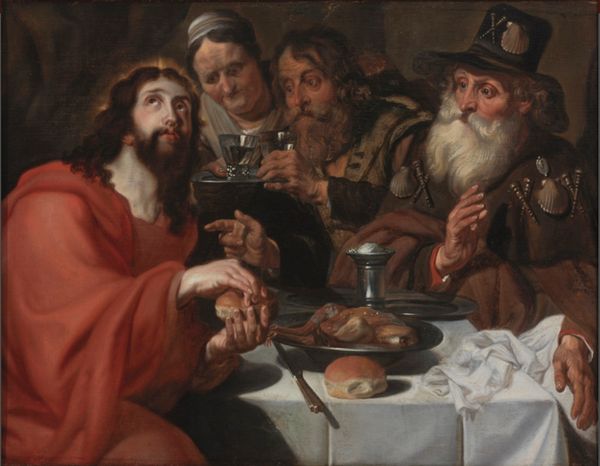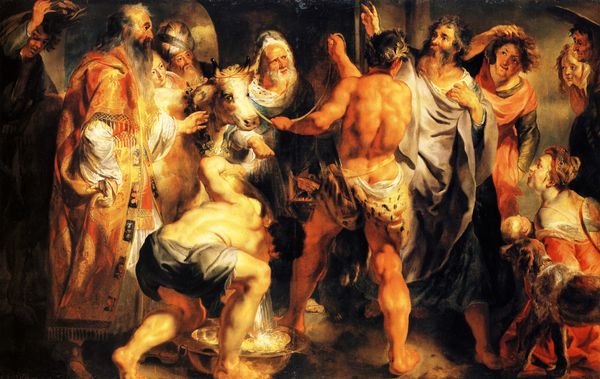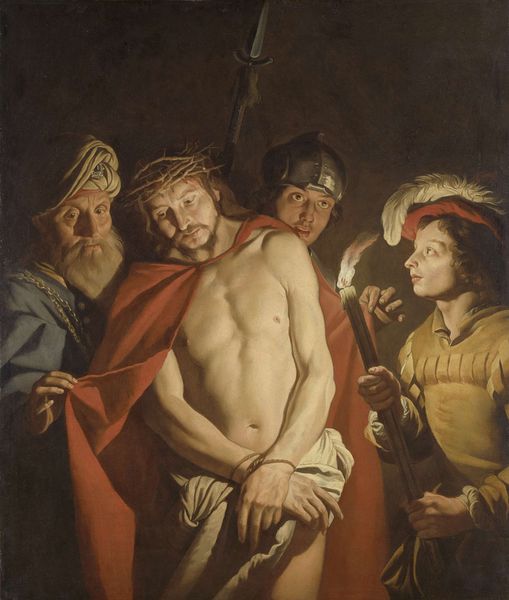
oil-paint
#
portrait
#
narrative-art
#
baroque
#
oil-paint
#
oil painting
#
history-painting
Copyright: Public domain
Curator: William Dobson’s, "The Executioner with the Head of John the Baptist," painted in 1643, immediately strikes me as an exploration of power, both exercised and resisted. What's your take as you look at the canvas? Editor: There’s a rawness in the materiality; it looks hurriedly produced, capturing an act mid-performance, though clearly a somber moment—note how little paint is used on skin; and it also seems a work that seeks to elevate local material realities to match works by Venetian masters like Titian. Curator: Absolutely. Thinking of the context—it was painted during the English Civil War. John the Baptist can be seen as symbolic of resistance to tyrannical power, even at the cost of one's life. The faces and postures convey the emotional complexity that stems from being forced into such choices. The question then becomes how does this artwork respond to the crisis in English governance, or at least a commentary on absolute power at the time? Editor: Consider also the visible brushwork. This speaks volumes about Dobson's process and perhaps the circumstances under which the artwork was produced. The labor put into the material object of this artwork creates this affect. The lack of gilding and adornment tells of England's internal material situation, yes? It forces the eye towards those most burdened and working to present and create this spectacle in the context of governance and a somber response in real life, in London, not Jerusalem! Curator: It really allows for different entry points. Looking at the women and boy, it’s worth exploring the construction of gender in this historical context. There is so much nuance in the interplay between masculine violence and feminine grief. Is this perhaps commenting on roles, a reflection on complicity and perhaps critique of expected behaviors within such patriarchal structures. How did Dobson feel about the "man's" duty here? Editor: Yes, it pushes us to consider how Dobson mobilized his understanding of material processes and available pigment, along with iconographic codes, to articulate his own critique of political events, I think. Curator: Examining these kinds of narrative paintings lets us ask complex questions about the intersection of gender, power, and political upheaval during times of intense crisis. Editor: Yes, it speaks to the broader political and material anxieties bubbling beneath the surface of 17th-century England.
Comments
No comments
Be the first to comment and join the conversation on the ultimate creative platform.
